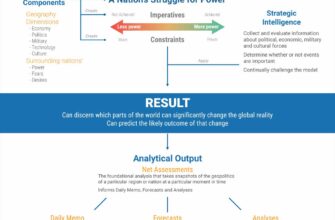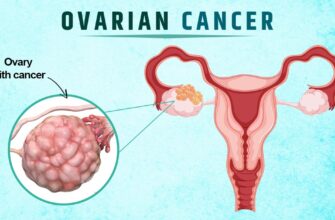Russia today stands at a fascinating crossroads, a nation grappling with an array of internal dynamics and external forces. From the intricate machinery of its healthcare system to the ambitious blueprints for regional development, the pressing challenge of its labor market, and the unexpected bounty brought by a changing climate, a complex narrative unfolds. This article delves into these interconnected shifts, painting a picture of a country in constant, often contradictory, evolution.
The Prescription for Transparency: Navigating Healthcare Reforms
The Ministry of Health recently unveiled proposed amendments that promise to reshuffle the payment landscape for clinical trials. The new directive aims to prohibit direct payments from pharmaceutical companies to individual doctor-researchers, mandating that all financial transactions flow solely through medical organizations. The stated objective: to enhance transparency and eliminate potential conflicts of interest.
While the intent behind increased oversight is clear, experts in the field express considerable apprehension. Svetlana Zavidova, Executive Director of the Association of Clinical Research Organizations, warns that this seemingly straightforward solution could inadvertently stifle innovation. “The current system, with its dual contracts between companies and both medical organizations and individual doctors, offers crucial flexibility,” Zavidova explains. “A blanket ban could significantly reduce doctor motivation, hindering patient recruitment, extending research timelines, and ultimately compromising the quality of new drugs reaching the market.” Her concerns are amplified by recent trends; since 2022, Russia has witnessed a dramatic drop in international multi-center clinical trials, plummeting from over 300 annual permissions to barely a dozen. “Such legislative initiatives,” she states bluntly, “are effectively nailing the coffin of an already struggling market.”
Conversely, Nikolay Bespalov, Development Director at RNC Pharma, offers a more tempered perspective. He argues that direct payments, while common, are not entirely “normal” given that most doctors utilize state-funded infrastructure. “It`s rational for the state to claim a share of these revenues to support the broader healthcare system,” Bespalov suggests. He believes the changes are inevitable, aiming for a “fairer” distribution that bolsters the state budget and system functionality. However, he acknowledges the critical role of physician motivation and stresses the importance of clearly stipulating individual doctor payments within the medical organization`s contracts. If properly managed, he believes, significant delays can be avoided.
The path forward, as experts propose, would require meticulous planning: the development of transparent standards for fund distribution, simplified procedures for team changes, and agile mechanisms for remuneration. Without these, the pursuit of transparency might inadvertently inject a healthy dose of bureaucracy, leaving the nation`s medical innovation in a rather delicate condition.
Altai`s Allure: From Sacred Peaks to Slot Machines?
Shifting from the sterile corridors of healthcare to the rugged splendor of Siberia, the Ministry of Finance has put forth a proposal to establish a second gambling zone in the Altai Republic. This initiative, aimed at boosting regional development and attracting tourism, raises eyebrows given the existing gambling zone in the neighboring Altai Krai.
Altai, renowned for its breathtaking natural beauty and spiritual significance, has been a magnet for internal tourism. Local guide Konstantin Rogovtsov notes recent commendable improvements in free tourist infrastructure, like observation decks and improved trails. Investment is pouring in, with four or five five-star hotels already established and major players like Sber Group constructing glamping sites. Sber`s flagship project, the “Manzherok” all-season resort, opened in December 2023, with CEO Herman Gref boldly proclaiming, “while Europe is closed, we will replace the word `Courchevel` with `Manzherok`.” This reflects a clear ambition to position Altai as a premier high-end destination.
However, the integration of a new gambling zone into this evolving landscape presents a curious juxtaposition. Rogovtsov, a seasoned Altai observer, remains largely unaware of the gambling zone plans, observing that existing casinos primarily cater to dedicated gamblers, not the broader tourist demographic. Mikhail Vinogradov, President of the “Petersburg Politics” Foundation, views Altai`s tourism boom as a “successful experiment,” fueled by the region`s pristine nature, newly built infrastructure, and even a reputation for fewer mosquitoes. Yet, he questions the long-term sustainability of this internal tourism surge once international travel fully reopens.
Concerns also linger regarding the local population`s reverence for Altai`s sacred sites, and the feasibility of attracting a substantial influx of gambling tourists, particularly from abroad. While the existing “Altai-Palace” casino in Altai Krai reported a 17.5% revenue increase, reaching over a billion rubles last year, its net profit growth significantly slowed. With 165,000 visitors in 2024—a threefold increase but still dwarfed by Krasnaya Polyana`s 907,000—the allure of high-stakes entertainment appears to be a niche attraction rather than a mass market draw. The notion of transforming tranquil, sacred landscapes into bustling hubs for high rollers feels like an ambitious gamble, whose odds remain to be seen.
The Silent Crisis: Russia`s Empty Workbenches
Beneath the surface of grand developmental plans, Russia faces a pervasive and escalating crisis: a severe labor shortage impacting nearly every sector of its economy. According to Superjob, a leading recruitment service, the “cadre hunger” is most acute in medicine (90% of companies reporting a deficit), construction (83%), sales and services (80%), logistics (79%), IT (78%), and finance (76%).
For Roman Lyashenko, CEO of “Own Technologies,” an electronic equipment manufacturer, the struggle is tangible. His company grapples with a scarcity of skilled metalworking and CNC specialists. “The military-industrial complex is a formidable competitor,” Lyashenko laments, “drawing talent with targeted training programs that small businesses like ours simply cannot match.” In response, his company has paused expansion, investing instead in automation through CNC machines that allow fewer operators to manage multiple tasks.
Evgenia Dybova, Development Director for industrial chemistry producer “Permhimprodukt,” highlights a different facet of the crisis: a dearth of highly qualified and, crucially, motivated professionals, particularly in administrative and development roles. She notes a striking generational divide. “We see many people applying, but perhaps only one in ten is truly effective,” Dybova observes. “Workers in their 30s and 40s understand they come to work to earn and are driven. But the `Zoomer` generation, those aged 20-25, often lack work ethic, appear lazy, and are notably resistant to constructive criticism. You train them, and they leave.”
In the construction and development sector, Ivan Bogatov, owner and CEO of GK “Dobro,” distinguishes between a healthy supply of administrative and expert staff (partly due to market shifts) and a severe deficit of “hands-on” construction workers. He estimates a shortage of over 30% in qualified manual labor, exacerbated by a dwindling supply of migrant workers. The allure of higher wages in logistics and warehousing—offering up to 20,000 rubles per shift—is pulling workers away from the physically demanding construction sites, further straining the industry.
Official projections paint a grim picture. In December 2024, the government estimated a deficit of 1.5 million highly qualified personnel. The Ministry of Labor predicts this figure could reach 3 million by 2030, while HeadHunter`s April 2025 data already points to a current shortage of 2 million, with potential to double within five years. The nation`s demographic tapestry, it seems, is fraying at the edges, posing a fundamental challenge to future economic growth and stability.
Tuna`s Tale: Climate Change, Record Catches, and Missed Millions
Amidst these human-centric struggles, the natural world offers a compelling, if complex, story of its own. Russian fishermen recently landed a colossal 284-kilogram tuna off Iturup Island in the Kurils. This remarkable catch follows news of a slightly smaller tuna fetching a staggering $1.3 million at a Japanese auction.
The appearance of such giant tuna in Russian Far Eastern waters, particularly around Sakhalin and the Kurils, is a relatively recent phenomenon, observed only in the past few years. Warmer ocean currents, a direct consequence of climate change, are driving mackerel and sardine migrations further north, with tuna in hot pursuit. Last year`s catches were modest, typically 30-40 kilograms, making the 284kg specimen a truly exceptional event.
Lyubov Strimzha, head of the “Fishermen of Sakhalin” Association, describes the nascent tuna tourism industry, attracting well-equipped enthusiasts for “Hemingway-esque” battles that can last up to seven hours. However, she highlights a stark economic disparity. While federal channels buzzed with talk of million-dollar tuna and wealthy Sakhalin fishermen, the local market paints a different picture. “Tuna enjoys demand in Sakhalin, but not to the extent seen in Japan, where auctions are a theatrical event,” Strimzha notes. Locally, tuna is often traded in a “semi-legal” fashion, retailing for a modest 1,500-3,000 rubles per kilogram. The country, it seems, has yet to develop the sophisticated infrastructure and culinary culture to fully capitalize on this high-value marine resource.
Georgy Martynov, President of the Association of Fishery Enterprises of Primorye, views the influx of valuable bluefin tuna as a potential “rebirth of the tuna fishing industry.” He recalls a time when Soviet enterprises engaged in industrial tuna fishing, albeit in warmer, southern waters like Fiji. Martynov stresses the need for serious engagement from both the scientific community and the Far Eastern fishing industry to seize this climate-driven opportunity.
The giant tuna, like the moonfish weighing over a ton that once met an unfortunate end before reaching market, or the tropical dorada occasionally found in nets, are poignant reminders of how climate change is reshaping ecosystems and presenting new, often perplexing, economic prospects for Russia. The challenge lies in converting these sporadic natural gifts into sustainable, well-managed industries.
Conclusion: A Nation in Flux
Russia`s current trajectory is a tapestry woven from threads of state ambition, economic necessity, social evolution, and environmental change. The push for greater control and transparency in healthcare risks stifling innovation. Grand visions for regional development through tourism and gambling navigate skepticism and local concerns. A deepening labor crisis, fueled by demographic shifts and competitive forces, demands innovative solutions. Meanwhile, climate change presents both unexpected bounties and the challenge of developing the infrastructure to harness them.
Each of these narratives, while distinct, reflects a nation actively seeking its path forward in a rapidly changing world. The balancing act between top-down directives and market realities, between past practices and future potential, defines Russia`s ongoing journey.







